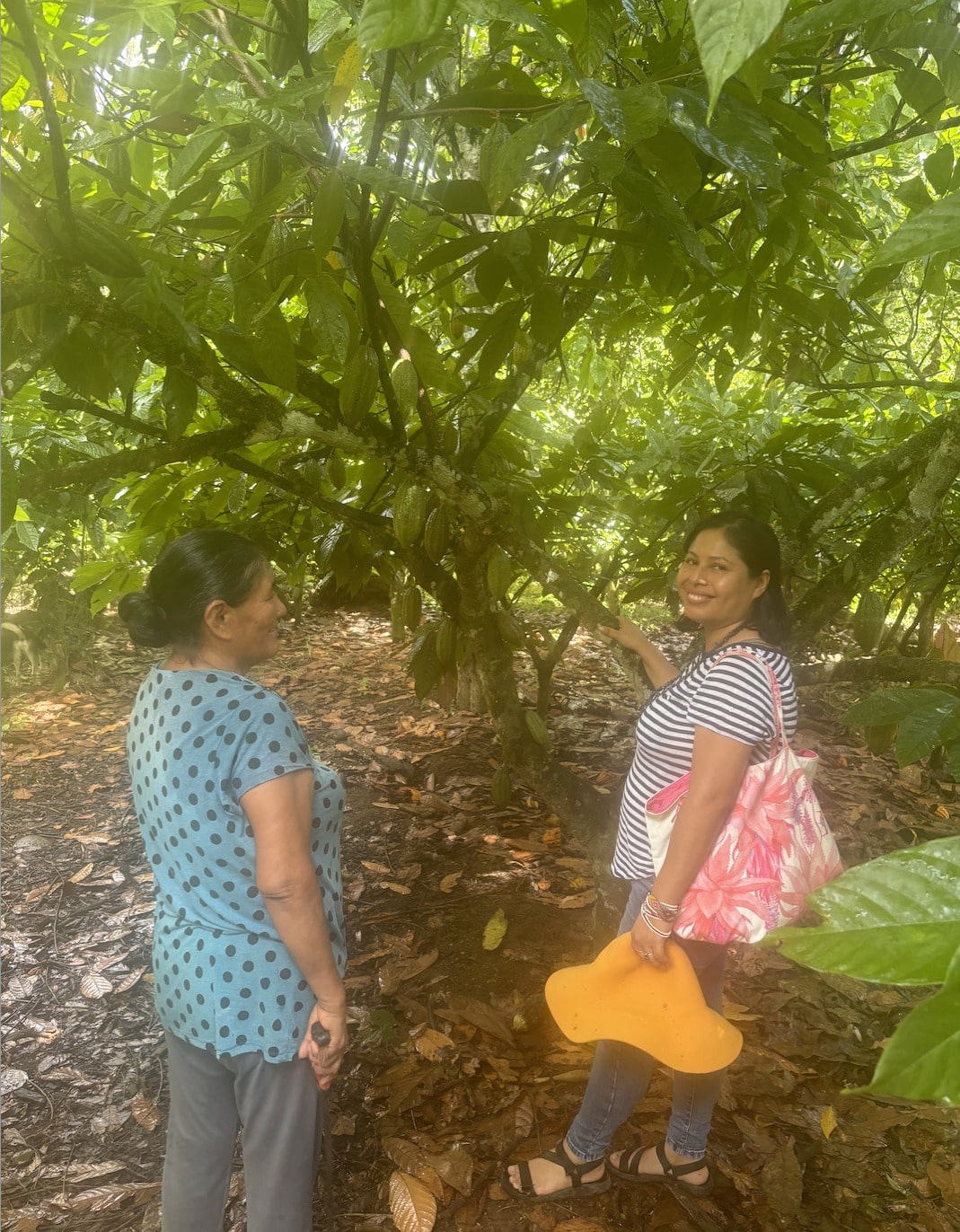Processing cacao is a fascinating journey that involves multiple steps to transform raw cacao beans into the delicious cacao and chocolate products we know. Each stage adds new flavors, textures, and characteristics to the beans while preserving their rich nutritional values. Let’s explore each step and discover some interesting facts about cacao.
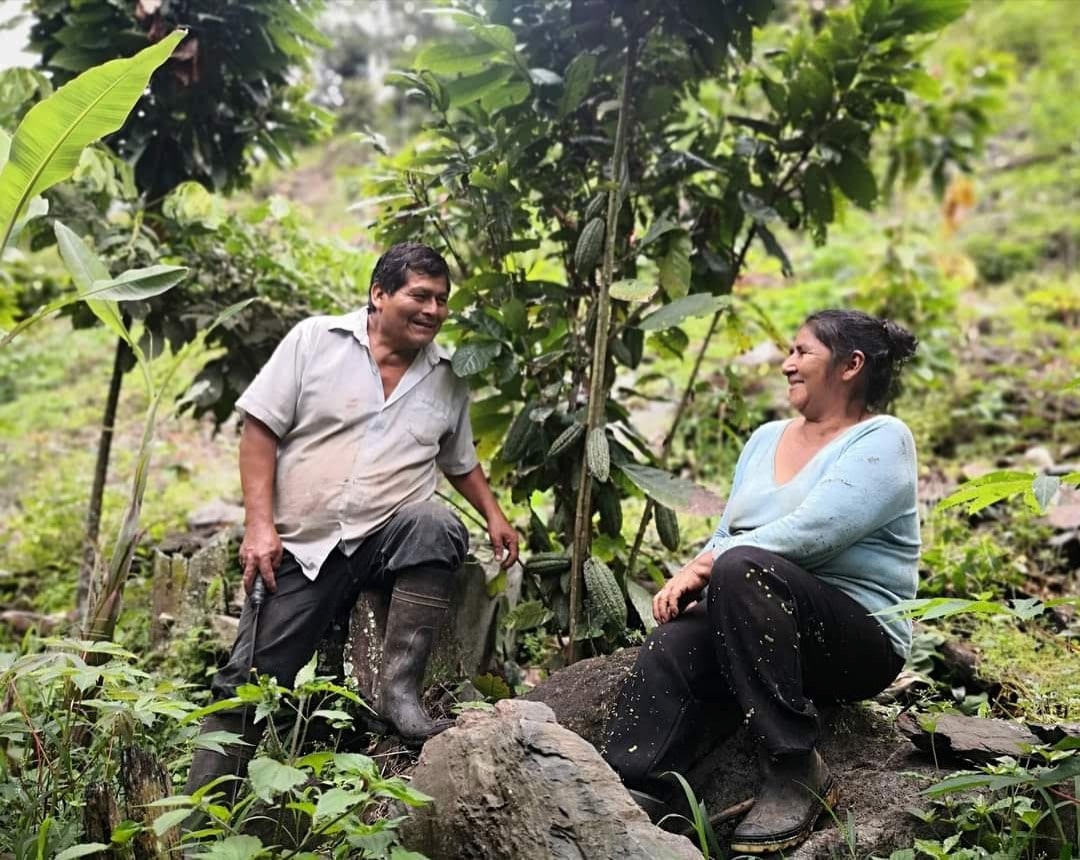
1. Harvesting
Cacao trees produce large, colorful pods called cacao pods, which are hand-picked to avoid damaging the tree or the fruit. When opened, the pods reveal cacao beans surrounded by a juicy, sweet pulp. In many countries, it is traditional to taste this pulp, which is rich in vitamins and minerals.
- Fun fact: In some regions, the pulp is also used to make juices and liqueurs.

2. Fermentation
Fresh cacao beans are placed in fermentation boxes or covered with banana leaves and left to ferment for several days. This step is crucial because it creates flavor precursors that give cacao its characteristic aroma. During fermentation, sugars in the pulp convert into alcohol and then into acetic acid, which penetrates the beans and triggers chemical reactions affecting their flavor.
- Fun fact: The duration and technique of fermentation significantly influence the chocolate's flavor profile—a longer fermentation can result in a more pronounced fruity or floral taste.
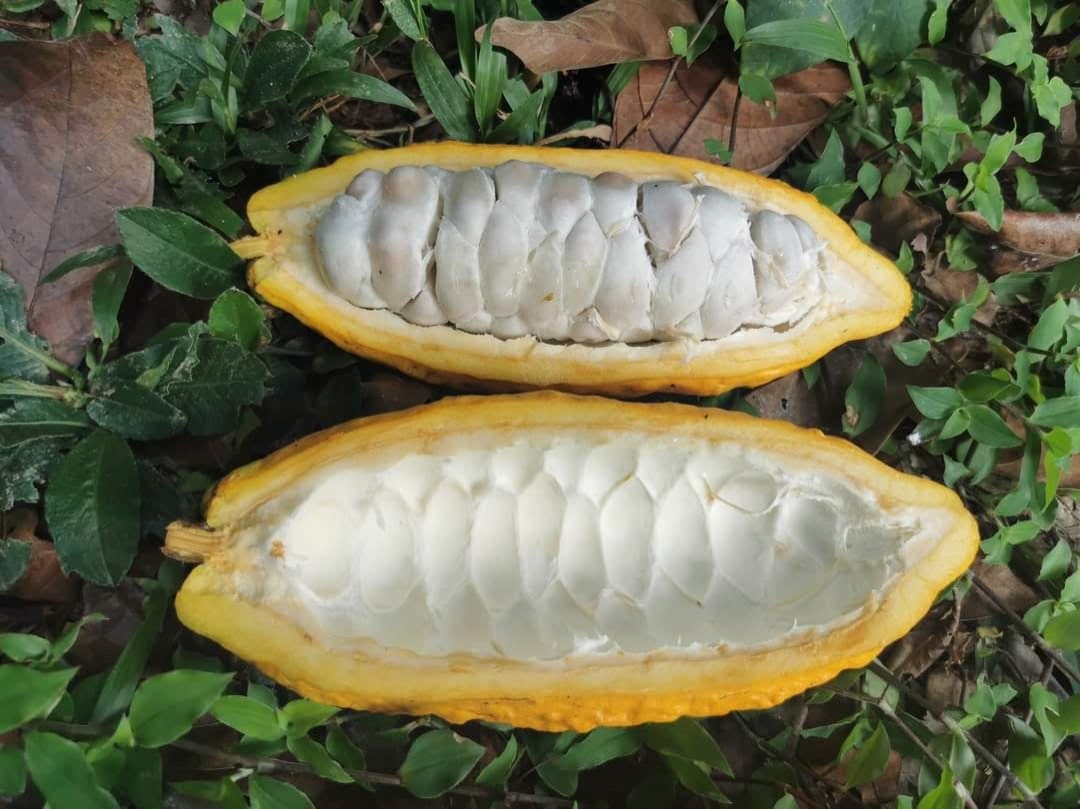

3. Drying
After fermentation, the beans are sun-dried for about a week to reduce their moisture content to roughly 6–7%. This step ensures the beans remain stable during storage and transport.
- Fun fact: In some countries, traditional drying methods such as using bamboo mats are employed, adding subtle, characteristic notes to the beans.
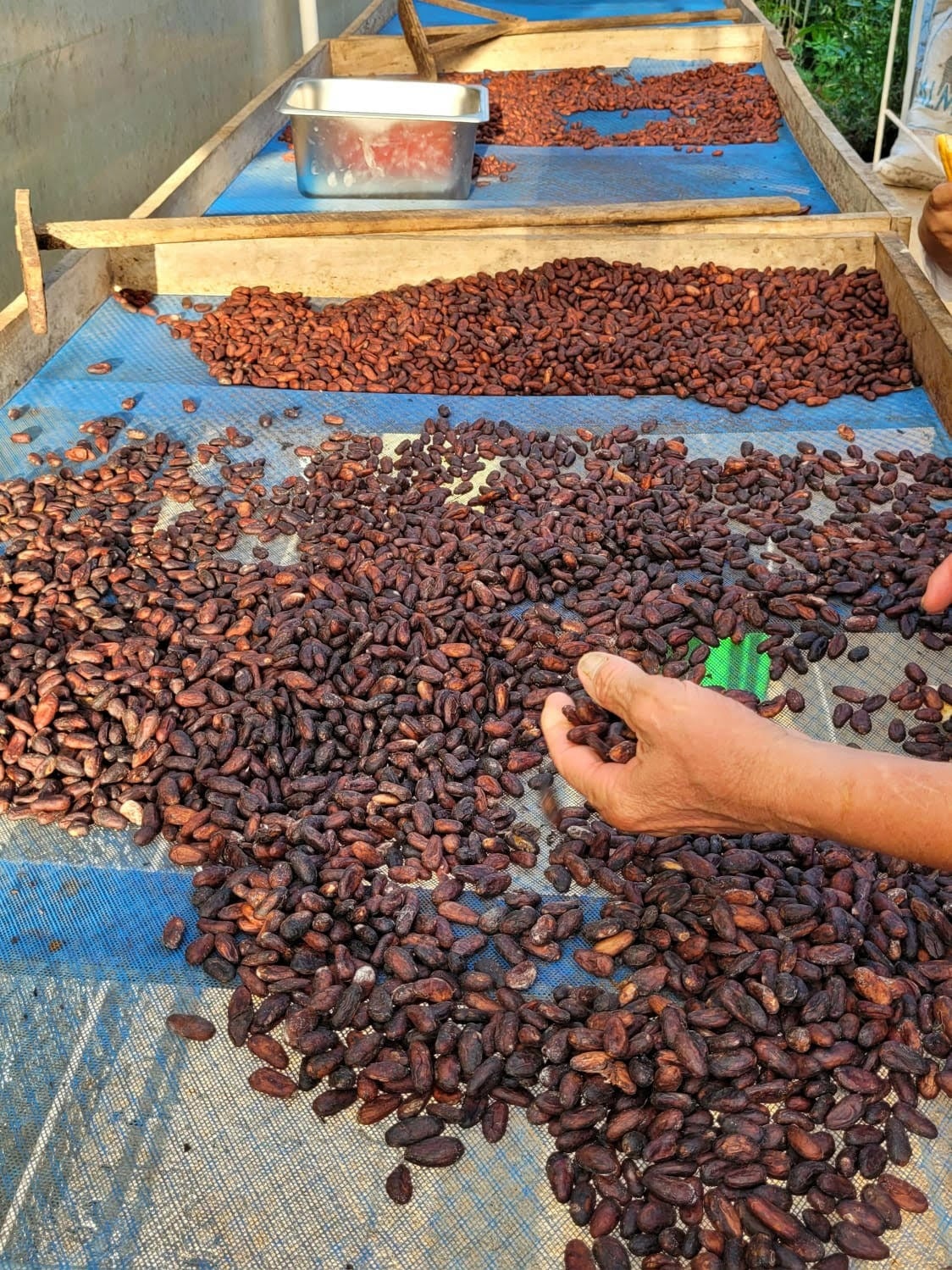
4. Roasting
Roasting is a key step in developing cacao’s flavor and aroma. Different temperatures and roasting times produce distinct flavor profiles, from delicate floral notes to deep, bitter tones. It is important to sort the beans beforehand and roast those of similar size together to ensure uniform properties.
- Fun fact: Cacao is roasted at different temperatures to achieve unique flavor experiences. Roasting also helps remove the bean shells.
5. Cracking and Winnowing
The roasted beans are cracked and separated into cacao nibs (or kernels). The shells that are removed are often used as fertilizer or even in teas.
- Fun fact: Cacao nibs are packed with antioxidants and are considered a superfood. They can also be eaten on their own as a healthy snack.
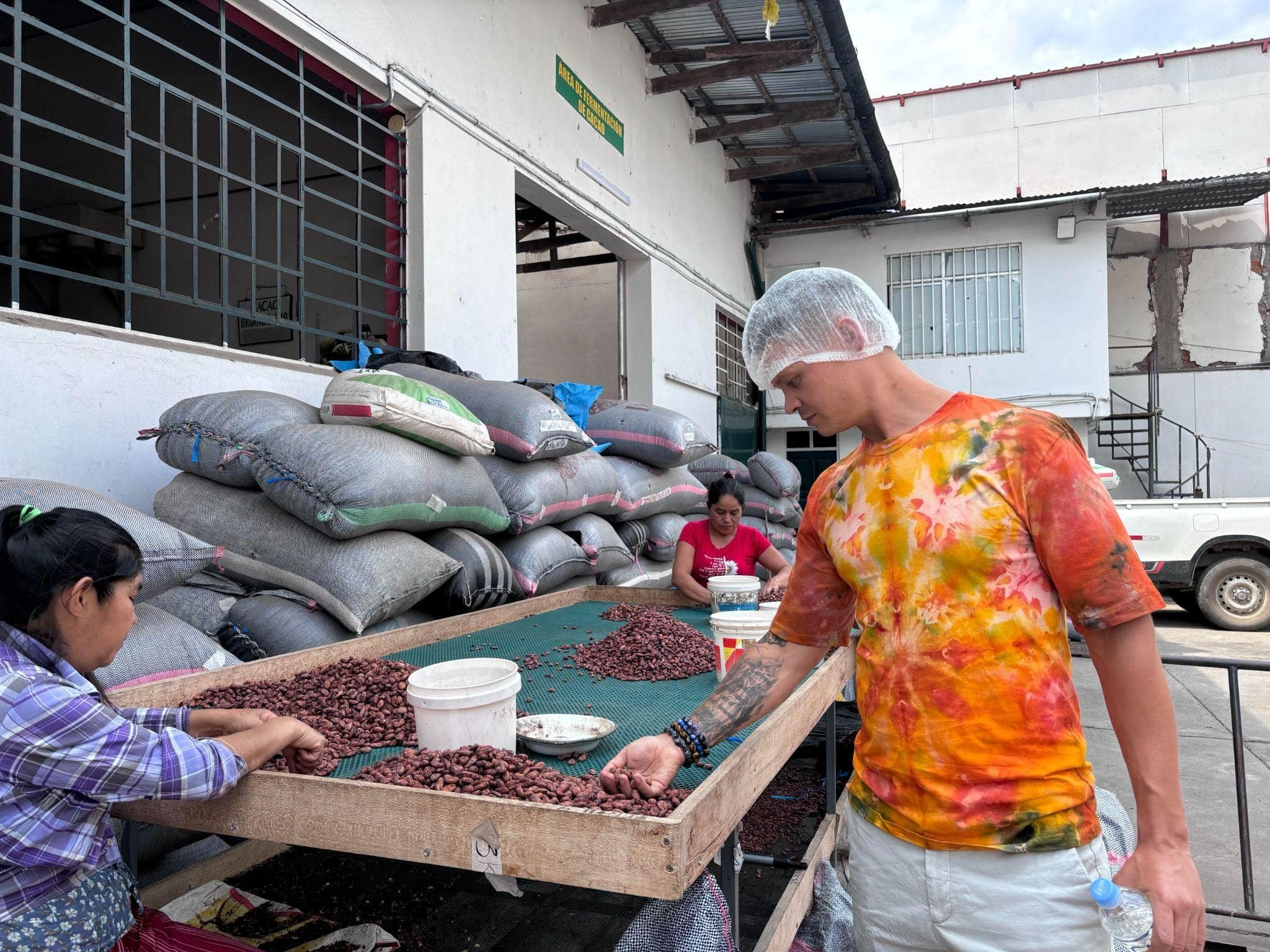
6. Grinding
The cacao nibs are ground into a thick paste called cacao liquor or cacao mass. Despite its name, the liquor contains no alcohol—it is simply melted cacao mass.
- Fun fact: Cacao mass is the foundation of all chocolate products. It contains cacao butter and cacao powder, which are essential components of chocolate.
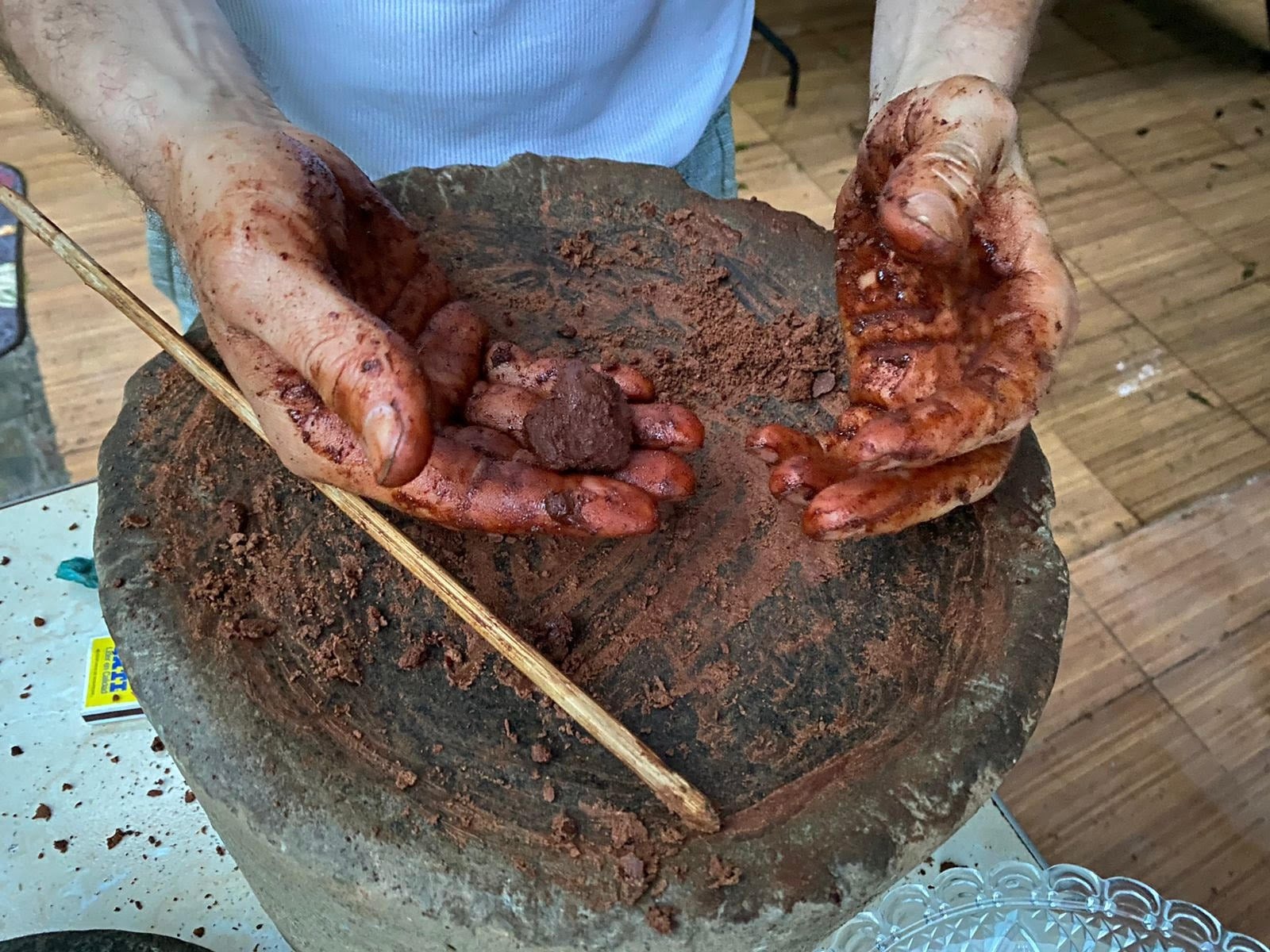
7. Pressing
Cacao mass is pressed to separate cacao butter, leaving behind cacao cake. Cacao butter is a precious ingredient used not only in chocolate but also in cosmetics and pharmaceuticals for its moisturizing properties.
- Fun fact: Cacao butter is one of the most stable vegetable fats, making it ideal for high-quality chocolate production.
8. Blending and Chocolate Making
Finally, the cacao mass is mixed with cacao butter, sugar, and other ingredients. The resulting chocolate mixture undergoes various processing stages such as conching, which improves flavor and smoothness.
- Fun fact: Conching can last up to 72 hours and helps remove bitter notes, achieving a perfect chocolate texture.
This cacao processing journey is meticulous and precise, with each step influencing the final chocolate’s taste, aroma, and texture.
Our mission is to bring you the highest-quality cacao and chocolate in the world. That is why we oversee every stage of cacao processing to ensure the cacao you receive is organic, processed using traditional methods with respect for nature and sustainability, and compliant with fair trade standards.
We work directly with over 15 families who cultivate cacao as their lifelong vocation. We learn much from them and support each other mutually.
Through our project, we bring you the fruits of this collaboration. We would be delighted if you decide to join us on a journey to Peru, to explore the world of cacao firsthand and experience the energy and culture carried by this magical crop.
